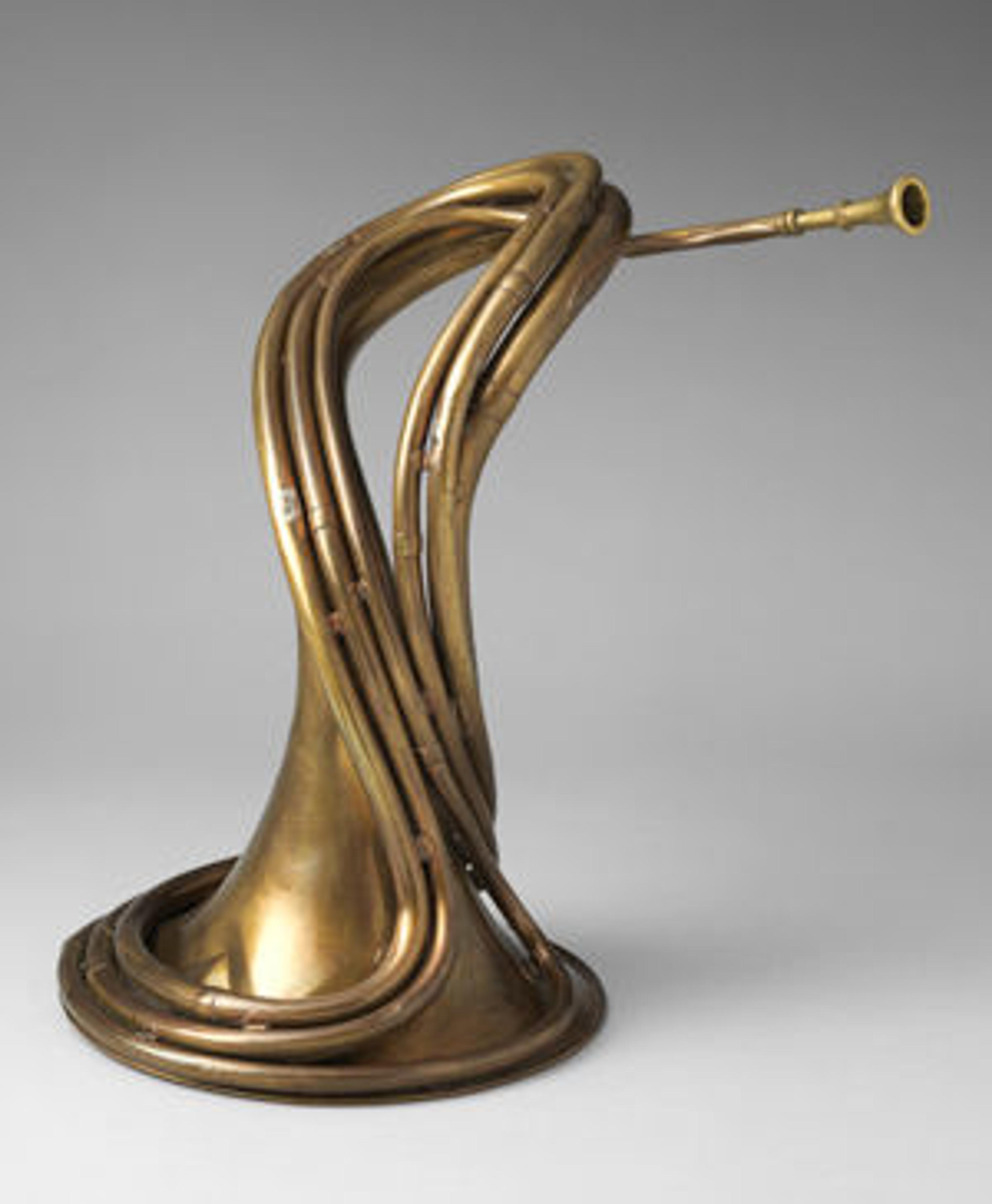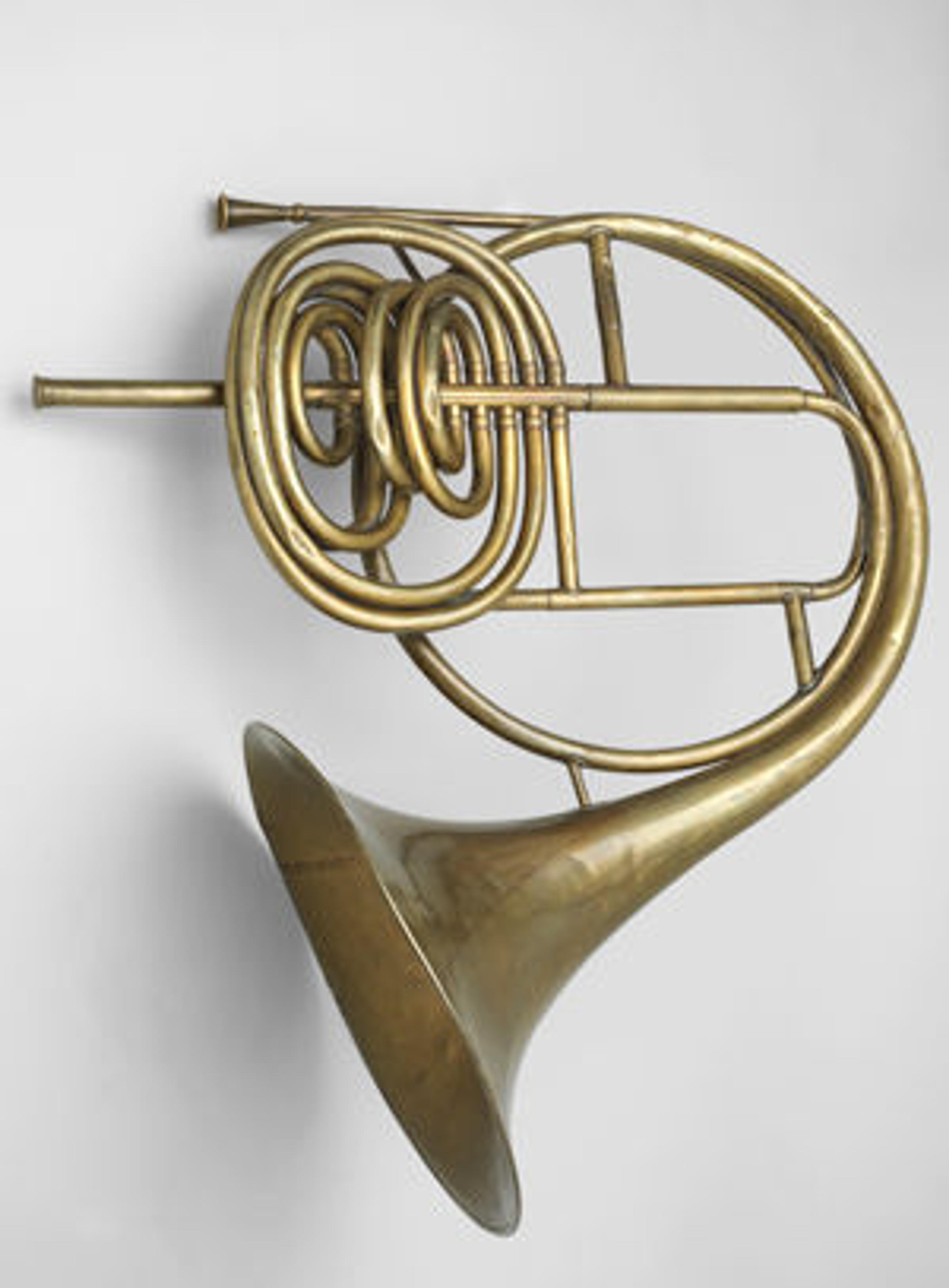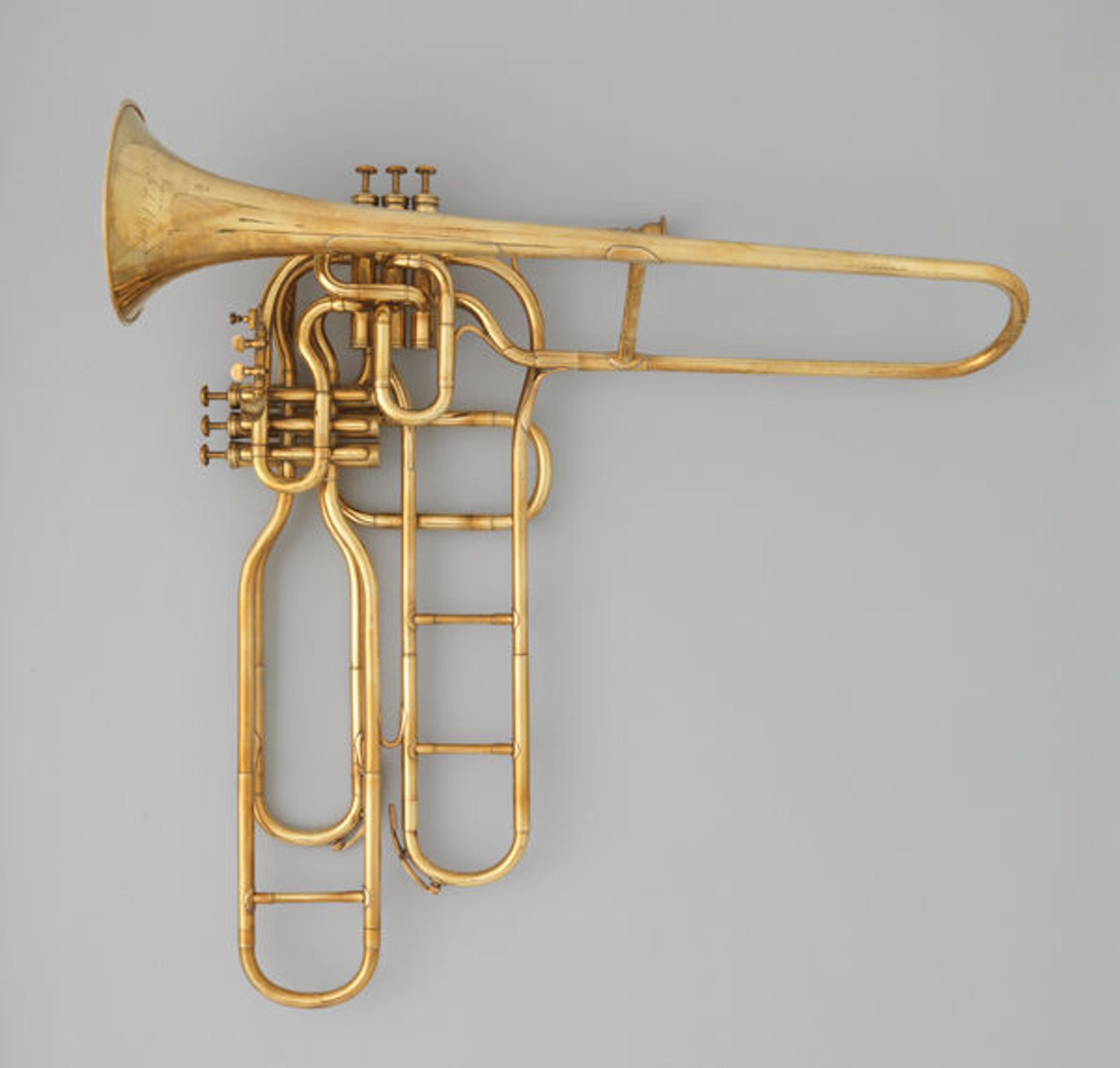The Sax Family: Three Generations of Genius
«In honor of the bicentenary of the birth of instrument maker Adolphe Sax, the Department of Musical Instruments has opened Celebrating Sax: Instruments and Innovation in gallery 682 of The André Mertens Galleries for Musical Instruments. This new exhibition features some astounding instruments by the maker and his family, and traces the influence he had on other builders of musical instruments.»

Left: Attributed to Alphonse (Antoine) Sax (Belgian, 1822–1874). Cornet-trompe in D, ca. 1862. Brass. The Metropolitan Museum of Art, New York, The Crosby Brown Collection of Musical Instruments, 1889 (89.4.1105). This unusually wound hunting horn was designed to be easier to handle than the traditional large and unwieldy hooped horn used in the field to signal to members of the hunting party. Its ergonomic form enables it to be tucked snugly under the player's arm, against their body for safe and convenient carrying.
Although Adolphe has attained the most fame as the inventor of the saxophone, there were actually three generations of the Sax family that produced musical instruments. Charles Joseph Sax (1790–1865), the family patriarch, trained initially as a cabinetmaker and became a noted manufacturer of wind instruments in Brussels, winning a court appointment from the Kingdom of the Netherlands. Four of his eleven children subsequently entered the trade: the most well-known are Adolphe (1814–1894), who distinguished himself first as a clarinetist; and Antoine Alphonse (1822–1874), who created controversy by promoting brass playing to women.

Attributed to Charles Joseph Sax (Belgian, 1790–1865). Cor omnitonique (omnitonic horn), 1833. Brass. The Metropolitan Museum of Art, New York, The Crosby Brown Collection of Musical Instruments, 1889 (89.4.2418). The loops of tubing incorporated into the body of this innovative natural horn allow the player to change the instrument's sounding length by using the long plunger to select the desired key. On traditional natural horns, this was accomplished by using a set of detachable crooks.
Adolphe's son Adolphe Edouard (1859–1945) and his nephew Charles Henri (1859–ca. 1920) continued the instrument-making tradition into a third generation. In 1928, Adolphe Edouard sold the family business to the renowned French firm Henri Selmer, which continues to be a prominent name in saxophone production. Selmer continued to use Sax's distinctive monogram on its instruments until 1933.
The Sax family was active during a period of profound change for wind instruments. Woodwinds were redesigned with intricate key systems and brass instruments were fitted with valves to increase their range, to render them playable in all keys, to improve their intonation, to enable them to produce a uniform timbre, and to make them easier to play. The Saxes were at the forefront of these developments. The three instruments shown here were radical departures from prevailing instrument designs of the period and represent the inventiveness of the Sax family. Come explore the cutting edge of nineteenth-century instrument design showcased in Celebrating Sax, on view through April 30, 2015.

Adolphe (Antoine Joseph) Sax (Belgian, 1814–1894). Valve trombone, ca. 1863. Brass, white metal, cork. The Metropolitan Museum of Art, New York, Purchase, Amati Gifts, 2014 (2014.488a–d). Sax's system of six independent valves was devised to correct the intonation problems encountered with typical three-valve instruments, which can sound out of tune when valves are played in combination. Valve trombones were ideal in situations when using a slide was awkward, such as while marching or playing in a cramped orchestra pit.
Bradley Strauchen-Scherer
Dr. Bradley Strauchen-Scherer is an associate curator in the Department of Musical Instruments.